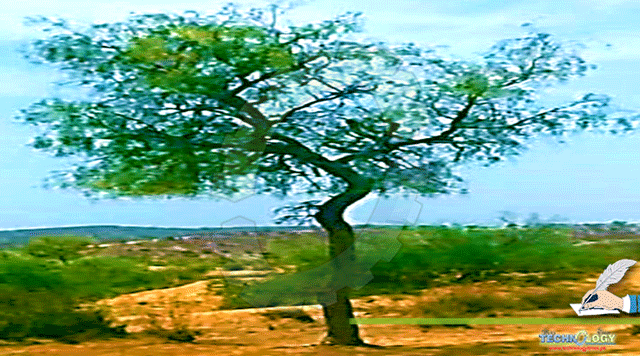Tharparkar is a deserted area with several droughts tolerant of wild edible plants/trees with their locals’ names such as, Kandi, Khabar, Kumbhat, Ber, Kirar, etc.

Tharparkar is a deserted area with several droughts tolerant of wild edible plants/trees with their locals’ names such as, Kandi, Khabar, Kumbhat, Ber, Kirar, etc.
They produce fruits in their respective season for the dwellers. At the present, people are consuming two fruits locally called Pilu fruit from the Khabar tree and Sangar or Sangri pods from the Kandi tree. While Kumbhat produce flower, pods, and gum (Acacia gum) locally called gond. It can be used in several dishes as stabilizer and thickener.
Ber’s plant produce ber fruit during winter. Kirar produce fruit that can be used to prepare pickle. All these are easily available in their seasons for the people of that region. These trees face harsh and scorching sun during summer season to bear fruits. Cutting of trees has demolished the valuable natural gifts in some areas, therefore, a proper policy should be adopted to prevent cutting of such trees.
Agriculture department and concern authorities should design strategies to protect trees, wildlife as well as human beings on the earth. Indeed! Survival of livings organisms is based on trees as they release oxygen in the air.
Focusing on current situation, Kandi and Khabar plant have produce fruit that are freely available to consume. Kandi is a nature-gifted wonder tree Khejri or Jand/Shami, and Kandi (Prosopis cineraria) in laymen’s language, belongs to the pea family Fabaceae. It is considered a golden tree or King tree of the desert. It is native to arid portions of Western Asia and the Indian Subcontinent, including Afghanistan, Bahrain, Iran, India, Oman, Pakistan, Saudi Arabia, the United Arab Emirates, and Yemen.
Kandi and Khabar plant controls the ecosystem of the arid and semi-arid regions of the Thar Desert, as well as it has religious importance. It is a drought-tolerant, wild tree that can bear the temperature of 40-45oC in Summer and less than 10oC in winter. It has a vital role in the socio-economic development of the area.
These plants enhance the fertility of soil due to nitrogen-fixing properties. Also, Honeybees usually get nectar during the flowering of this tree and even make their hives in the tree. It is commonly considered a multipurpose tree as it bears flowers and pods, usually consumed as vegetables by the local people of Tharparkar.
On the other hand, leaves are a reliable source of animal fodder, the exudate gum with medicinal properties. Green leaves are nutritious containing crude protein, crude fiber, nitrogen-free extract, ash, ether extract, calcium, and phosphorus as 11.9–18.0%,13–22%, 43.5%, 6 8%, 2.9%, 2.1%, and 0.4% respectively.
Meanwhile, the pod of the tree is locally called ‘Sangri.’ It is a reliable source of vegetables during the season in unripe form while ripe pod dropped with wind blowing and can be consumed as such. A ripe pod or naturally dried pod is somehow hard as compared to an unripe, and it has a sweet taste with powdery materials.
Sangri is a major ingredient of the Panchkutta vegetable. In nutritional point of view, pod is rich in crude protein (18%), fat (2.0%), carbohydrate (56%), crude fiber (26%), phosphorus (0.4%), calcium (0.4%) and iron (0.2%) with high caloric value of 5000 Kcal energy.
It is estimated from the scientific findings that pods and seeds (Prosogerin, linoleic acid, and prosophylline) are good for preventing protein malnutrition and calcium iron deficiency in blood, asthma, piles, leprosy, conditions, etc.
Moreover, the preparation of decoction from twigs and flowers is scientifically reported as anti-diabetic. Ayurvedic and medicinal views suggested that bark extract from the tree can be used to treat scorpion or snake bites. According to the United States, National Academy of Sciences, the Consumption of dry pods of Khejri is known to prevent protein and mineral deficiency.
The cooked pods are considered functional foods for the prevention of several illnesses. Unripe green pods can be used to prepare curry as well as pickles. People of Thar believed that two trees named Kandi & Khabar are natural sources of food and fodder for animals. Both tolerate drought and harsh weather in summer. According to the Thar Commission report, natural resources have a good share to maintain the healthy diet of the Thari people.
Concern authorities should design a policy to protect the valuable trees in Tharparkar so that their nutritious fruits can be consumed by the populace. Further, advanced food preservation techniques should be adopted to preserve the pods for a long time to be used as cuisine throughout the province. If such modern techniques acquired, will benefit the local people as well as nearby cities.
There is no food processing and preservation unit in Tharparkar. The development of such manufacturing plants would create employment for the local people, as well as reduce the wastage of natural fruits and vegetables grown there in their seasons. Also, with the modernization, people not consume fruits and vegetables as much as before and use for animal feed.
To develop the modes of utilization of nutritious fruits in rural Tharparkar, advancement to the farmers, and encouraging the businessmen should be focused well. Also, an awareness based seminars should be organized through non-governmental organization working in Tharparkar.
According to the Purdue University report, a bakery product bread is prepared from ground bark, with or without the incorporation of other flour. Additionally, dried seeds and leaves can be ground and mixed with flour for bread making.
Parkash Meghwar (Food Technologist)
Department of Food Science and Technology, University of Karachi.